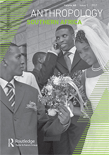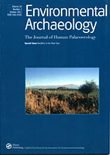
Magallania
Scope & Guideline
Pioneering Research for a Changing World
Introduction
Aims and Scopes
- Archaeological Research:
The journal publishes significant archaeological findings from Patagonia, including stratigraphic studies and artifact analysis, which contribute to the understanding of human occupation and cultural evolution in the region. - Bioarchaeology and Human Remains:
A core focus is on bioanthropological studies, particularly investigations of human remains that provide insights into health, diet, and social structures of past populations. - Environmental History and Ecological Interactions:
Magallania explores the historical interactions between humans and the environment, examining how ecological factors have shaped human settlements, subsistence practices, and cultural developments. - Cultural Heritage and Historical Narratives:
The journal emphasizes the importance of cultural heritage, including the examination of historical documents and artifacts that reveal the narratives of indigenous and colonial interactions. - Zooarchaeology and Archaeobotany:
Research on animal and plant remains is a significant aspect, focusing on subsistence strategies and the ecological context of past human societies.
Trending and Emerging
- Interpersonal Violence and Conflict Studies:
There is a growing interest in exploring patterns of interpersonal violence and conflict in historical contexts, highlighting social dynamics and cultural responses to external pressures. - Digital Archaeology Techniques:
The adoption of digital methods for analyzing archaeological sites, such as rock art, is on the rise, showcasing an integration of technology in traditional archaeological practices. - Socio-Environmental Studies:
An increasing number of publications are focusing on socio-environmental interactions, emphasizing the complex relationships between human societies and their environments over time. - Indigenous Perspectives and Agency:
Recent research is increasingly incorporating indigenous viewpoints and agency, reflecting a broader trend in academia towards recognizing and valuing indigenous knowledge systems. - Zooarchaeology and Dietary Studies:
Emerging themes include detailed zooarchaeological studies that examine past diets and mobility patterns, providing insights into the subsistence strategies of prehistoric populations.
Declining or Waning
- Colonial Studies:
Research specifically centered on colonial encounters, particularly those from earlier periods, has seen a decrease, possibly due to a shift towards more contemporary socio-environmental issues and indigenous perspectives. - Traditional Historical Accounts:
There seems to be a waning interest in purely narrative historical accounts that do not integrate archaeological or environmental data, suggesting a move towards more interdisciplinary approaches. - Exploration Narratives:
The focus on historical exploration narratives, such as those chronicling European expeditions, has diminished, indicating a potential shift towards examining local histories and indigenous perspectives more prominently.
Similar Journals

Anthropology Southern Africa
Illuminating the complexities of cultural phenomena in Southern Africa.Anthropology Southern Africa is a prestigious journal published by Routledge Journals, Taylor & Francis Ltd, and is dedicated to advancing the field of anthropology through rigorous scholarship and critical discourse. Established in 2013 and converging through 2024, this journal sets a high standard in its category, currently holding a Q2 classification in Anthropology and a Q1 ranking in Cultural Studies for the year 2023, ensuring its position as a significant contributor to social science research. With a robust Scopus ranking that places it in the 82nd percentile for Cultural Studies and the 67th percentile for Anthropology, Anthropology Southern Africa serves as an essential platform for researchers, professionals, and students engaged in anthropological inquiry and cultural analysis. Although it is not openly accessible, the publication prides itself on high-quality submissions that explore diverse cultural phenomena and anthropological perspectives, thereby inviting interdisciplinary engagement and fostering a global academic dialogue.

Prilozi Instituta za Arheologiju u Zagrebu
Navigating the depths of archaeology for a brighter academic future.Prilozi Instituta za Arheologiju u Zagrebu is a prominent academic journal published by INST ARHEOLOGIJU, dedicated to advancing the field of archaeology and related historical studies. Operating in Croatia, this journal serves as a vital platform for scholars, researchers, and students to disseminate innovative research and insights within the realm of archaeology, with a focus on the rich cultural heritage of the region. The journal spans contributions from 2002 to 2011 and has ongoing publication since 2013, reflecting its commitment to contemporary archaeological discourse. With a growing reputation, it has achieved a Q3 ranking in the fields of Archaeology and Arts and Humanities, and a Q2 ranking in History, signifying its impact and relevance in the academic community. Although Open Access options are not available, the journal remains an essential resource for those pursuing in-depth knowledge and research in archaeology. Researchers can harness the journal's extensive scope to explore critical historical narratives and archaeological findings, solidifying its importance in both local and global contexts.

Spal
Elevating Scholarship in Archaeology and History.Spal is a distinguished academic journal dedicated to the fields of Archaeology and History, published by the University of Seville, Editorial. With an ISSN of 1133-4525 and an E-ISSN of 2255-3924, it has established a prominent reputation within the scholarly community, currently enjoying an impressive Q1 ranking in Archeology (Arts and Humanities) and History, alongside a Q2 ranking in Archeology for 2023. The journal serves as a critical platform for researchers, professionals, and students alike, promoting the dissemination of cutting-edge research and innovative methodologies in these vital disciplines. Spal's Scopus Ranks place it in the 84th percentile for Arts and Humanities - History and the 72nd for Archeology within the field, emphasizing its impact and relevance in contemporary scholarship. Although it operates under a traditional access model, its commitment to advancing knowledge and discourse in archaeological and historical studies remains unwavering. The journal's coverage spans from 2015 to 2024, positioning it well to contribute to ongoing academic conversations and foster collaborations within the global research community.

ENVIRONMENTAL ARCHAEOLOGY
Uncovering Ancient Interactions to Address Modern ChallengesENVIRONMENTAL ARCHAEOLOGY, published by ROUTLEDGE JOURNALS, TAYLOR & FRANCIS LTD, serves as a leading platform for innovative research at the intersection of archaeology and environmental science. With a commendable history dating back to 1981 and a notable convergence in scholarly discussion from 2002 to 2024, this journal holds an esteemed Q1 ranking in both Archeology and Archeology (arts and humanities), as well as a Q2 in Environmental Science as of 2023. Positioned in the United Kingdom, ENVIRONMENTAL ARCHAEOLOGY's ISSN 1461-4103 and E-ISSN 1749-6314 reflect its commitment to disseminating high-quality research that explores how past human interactions with the environment inform modern ecological challenges. With its robust Scopus standings, including a rank of #17/413 in Arts and Humanities and an impressive #15/354 in Social Sciences, the journal is recognized for its significant contribution to the field, making it an essential resource for researchers, professionals, and students eager to advance their understanding and application of environmental archaeology.

Azania-Archaeological Research in Africa
Decoding the Mysteries of Africa's Ancient Civilizations.Azania-Archaeological Research in Africa, published by Routledge Journals, Taylor & Francis Ltd, stands as a premier academic resource in the field of archaeology, specifically focusing on African archaeological research. With a remarkable tradition dating back to 1966, the journal spans over half a century of rigorous scholarship, aiming to enrich our understanding of Africa's diverse cultural and historical narratives. Currently indexed in the prestigious Q1 category for both Archaeology and Arts and Humanities, it ranks impressively in the Scopus database, placing within the top 12% of journals in its field. This commitment to excellence facilitates the dissemination of innovative and insightful research, catering to a broad audience of researchers, professionals, and students alike. While the journal is not open access, its impactful contributions continue to shape contemporary archaeological discourse, making it an essential resource for anyone passionate about the study of Africa's archaeological heritage.

Fornvannen-Journal of Swedish Antiquarian Research
Advancing Antiquarian Insights for a Richer HistoryFornvannen - Journal of Swedish Antiquarian Research is a distinguished peer-reviewed journal dedicated to advancing the field of antiquarian studies through rigorous research and scholarship. Published by the Royal Academy Letters, History & Antiquities in Sweden, this journal has been a cornerstone of archaeological and historical discourse since its inception in 1978. It currently holds an esteemed position in the Q3 category in both Archaeology and History as per the 2023 assessments, reflecting its commitment to promoting high-quality academic contributions. With an ISSN of 0015-7813 and an E-ISSN of 1404-9430, Fornvannen provides insights into Swedish antiquities and serves as a vital resource for researchers and scholars eager to explore the nuances of archaeological and historical findings. Although not an open-access journal, it offers a comprehensive platform for the dissemination of knowledge within the fields of arts and humanities. As it continues its journey from 2011 to 2024, Fornvannen remains pivotal in fostering scholarly dialogue and enhancing our understanding of Sweden’s rich historical tapestry.

ARCHAEOLOGY
Advancing Archaeological Discourse for a Modern WorldARCHAEOLOGY is a distinguished peer-reviewed journal published by the Archaeological Institute of America, focusing on the multifaceted aspects of archaeological research and its relevance to contemporary society. Established in 1966, this journal serves as a critical platform for scholarly discourse in the field, showcasing innovative findings, theoretical advancements, and methodological discussions related to archaeology. While it maintains a Q4 ranking within the disciplines of archaeology and arts and humanities, its contributions remain valuable for those engaging in archaeological studies or seeking to understand historical and cultural narratives. The journal is accessible in print, with an ISSN of 0003-8113 and an E-ISSN of 1943-5746, ensuring that a wide audience can benefit from its insights. Although currently not classified as Open Access, the meticulous peer-review process ensures a high standard of academic rigor, making it an essential source for researchers, professionals, and students alike who are dedicated to exploring the past through archaeological lenses.

Relaciones
Connecting Ideas, Transforming Anthropology.Relaciones is a prestigious open-access journal published by the SOC ARGENTINA ANTROPOLOGIA, dedicated to the field of anthropology. Since its inception in 1937, this journal has served as a vital platform for disseminating innovative research and insights within the social sciences community. With both its print (ISSN: 0325-2221) and online (E-ISSN: 1852-1479) formats, Relaciones ensures widespread accessibility, empowering researchers, professionals, and students to engage with contemporary anthropological discourse. The journal aims to foster critical discussions that not only reflect on cultural and societal issues but also contribute to theoretical advancements in anthropological methodologies. By maintaining a commitment to quality and open access, Relaciones plays a crucial role in shaping the future of anthropology in Argentina and beyond, encouraging scholarly collaboration and enriching the academic landscape.

California Archaeology
Illuminating California's Archaeological JourneyCalifornia Archaeology is a premier academic journal dedicated to the multifaceted study of archaeology within the context of California's rich historical and cultural landscape. Published by Routledge Journals, Taylor & Francis Ltd, this journal conveys cutting-edge research from 2009 to 2024 and is recognized for its impact in the field, with a commendable Q2 ranking in both archaeology and arts and humanities as of 2023. Scholars and practitioners are encouraged to disseminate their findings and insights through this journal, contributing to a deeper understanding of archaeological practices and interpretations in California. With access options designed to enhance the visibility of research, California Archaeology serves as an essential resource for professionals, students, and researchers devoted to advancing knowledge in archaeology, making it a cornerstone of academic discourse in the discipline.

Intersecciones en Antropologia
Championing open access for global understanding.Intersecciones en Antropologia, published by the Universidad Nacional del Centro de la Provincia de Buenos Aires (UNICEN), Facultad de Ciencias Sociales, is a premier open-access journal in the field of anthropology, having established its presence since 2010. With an impressive impact factor and currently holding the distinguished Q1 quartile ranking in anthropology for 2023, this journal has quickly become a vital resource for scholars and practitioners alike, offering a platform for innovative research and critical discussion. The journal aims to advance anthropological scholarship by encouraging the dissemination of diverse perspectives and stimulating dialogue across geographical and cultural boundaries. Its open-access model, adopted in 2017, ensures that valuable research findings are accessible to a global audience, fostering collaboration and engagement within the academic community and beyond. Located in the vibrant cultural context of Argentina, Intersecciones en Antropologia serves as a conduit for significant anthropological dialogues, making it an essential read for those dedicated to understanding and contributing to the evolving landscape of social sciences.